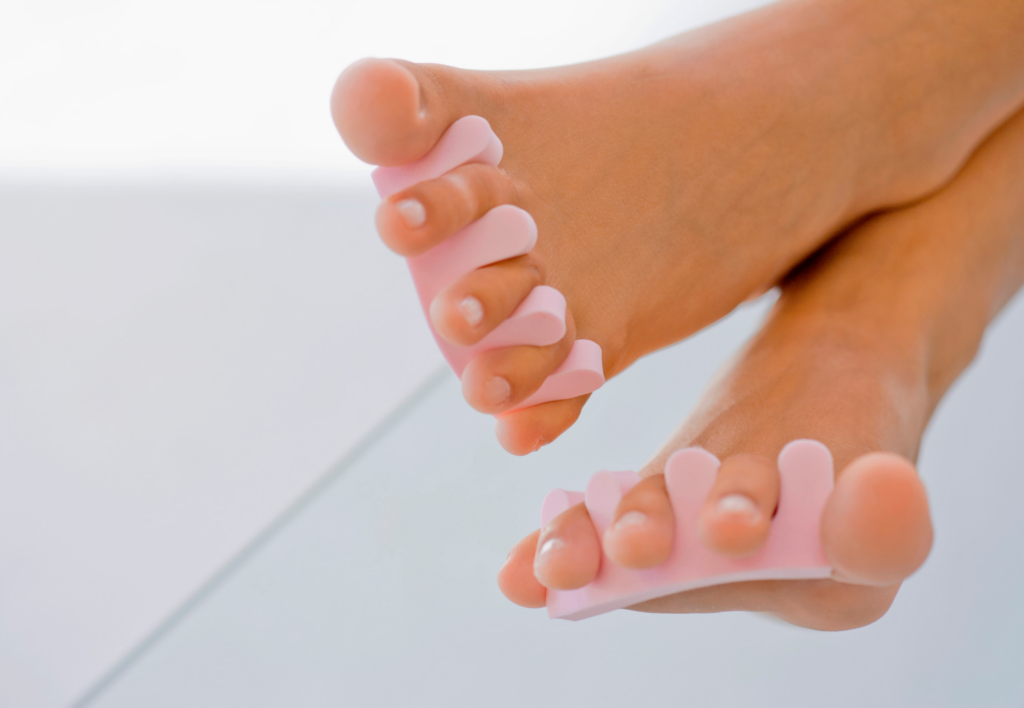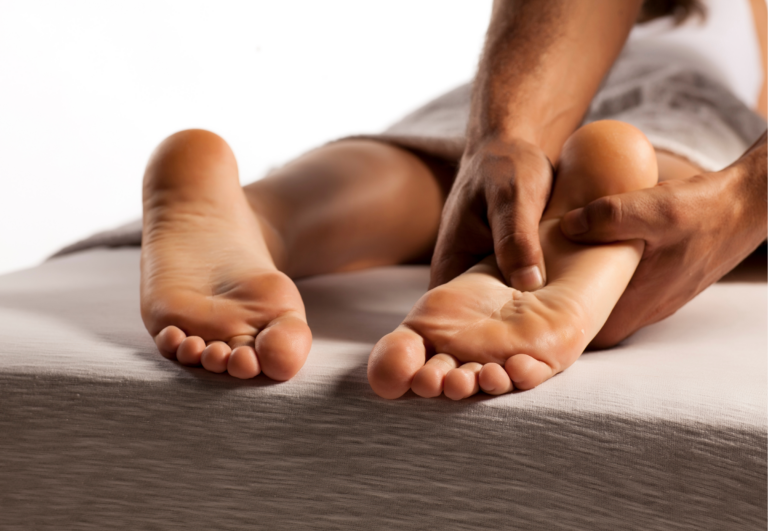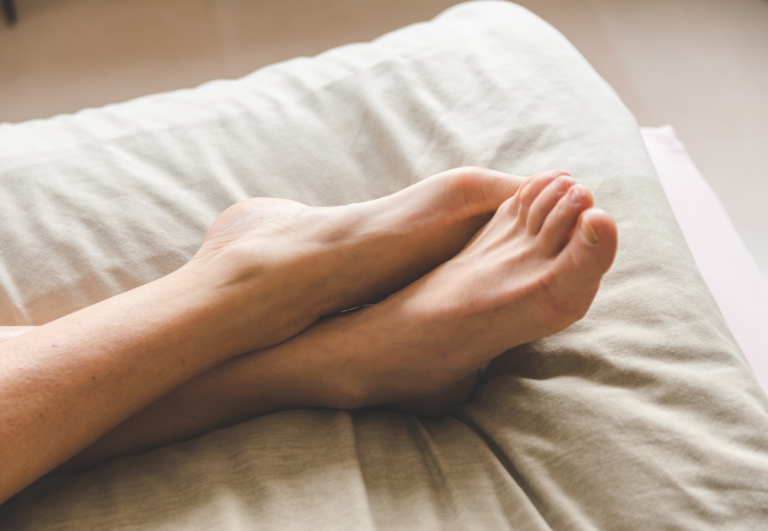How to Put on Toe Spacers: A Simple Step-by-Step Guide
Toe spacers are simple yet highly effective tools for anyone looking to improve foot health and comfort. As someone who has integrated toe spacers into my daily routine, I’ve experienced the benefits first-hand. They are designed to realign the toes to their natural position, which can alleviate pain, enhance balance, and potentially improve the strength of foot muscles.
To ensure you’re reaping the full benefits of toe spacers, correct application is crucial. Start by cleaning your feet and the spacers to remove any debris. Gently place the toe spacers between each toe, making sure they fit snugly but comfortably. It’s important to avoid forcing them into position, as this can cause discomfort and negate the positive effects.
Regular use of toe spacers can contribute to overall toe and foot comfort. Whether you’re an athlete looking to optimize performance or someone seeking relief from foot pain, establishing proper placement will make a significant difference. Remember, while I am an enthusiast and advocate for the use of toe spacers, if you experience persistent pain or discomfort, consider consulting a healthcare professional for personalized advice.
How To Put On Toe Spacers (Step-by-Step)
Incorporating toe spacers into your routine can help with issues like overlapping toes and can be beneficial for activities such as running and yoga. Here’s how to correctly wear toe separators for optimal benefit.
Preparation and Initial Steps
Before using toe spacers like Correct Toes, it’s essential to ensure your feet and the spacers are clean. This helps prevent any infections, especially if you have sensitive skin or nails. Start by washing your feet and drying them thoroughly. Check your toe separators for any damage or wear, and make sure they are the right size for your feet to avoid discomfort.
Steps for preparing your feet:
- Wash: Use soap and water to clean your feet.
- Dry: Ensure feet are completely dry.
- Inspect: Examine toe spacers for integrity.
Securing the Spacers
To properly secure the toe spacers, gently place them between each toe, starting with the big toe. Make sure the separator sits comfortably, without forcing your toes apart too aggressively, which can cause discomfort. If you experience any pain, re-adjust the spacers until they feel comfortable. Wear suitable footwear that accommodates the spacers, like wider barefoot or yoga toes-style shoes, to maintain the placement while going about your daily activities or during exercises like running.
Key points for securing toe spacers:
- Gentle placement: Insert the separator carefully, starting with the big toe.
- Comfort check: Ensure each toe feels comfortable without pain.
- Footwear: Wear spacers with roomy shoes to keep them properly aligned.

Common Issues and Solutions
When using toe spacers, it’s critical to address any discomfort promptly to prevent further complications. Toe spacers are designed to alleviate pain and correct deformities, but if used improperly, they can lead to additional issues.
Dealing With Blisters and Corns
Blisters and corns often result from friction and rubbing when toes are misaligned or cramped in tight footwear. When wearing toe spacers, make sure they fit snugly but don’t cause excessive pressure. To protect against blisters and corns, follow these guidelines:
- Wear Properly Fitted Shoes: Ensure your shoes have enough room to accommodate the spacers without squeezing.
- Start Slow: Begin with shorter periods of wearing the spacers and gradually increase as your feet adjust.
Avoiding Further Toe Deformities
Toe spacers can be great tools to prevent toe deformities like bunions or hammertoes. However, using them incorrectly can increase your risk of complications. Adhere to these principles to maintain proper toe health:
- Consult with a Podiatrist: Before starting any new splint or toe spacer regimen, especially if you’re experiencing pain, consult with a podiatrist.
- Follow the Instructions: Use toe spacers as instructed, avoiding overextension or forceful wedging between toes.
By adhering to these directives, toe spacers can be a beneficial tool in managing foot health and comfort.
Maintenance and Care
Proper maintenance of toe spacers is crucial for ensuring their effectiveness and lifespan. Good hygiene and regular inspections for wear or damage can significantly extend their use.
Cleaning and Storage
Cleaning your toe spacers is a simple but important step in maintaining hygiene and preventing infections. I recommend washing them with mild soap and warm water after each use. It’s best to let them air dry completely before storing them. Store your spacers in a clean, dry place away from direct sunlight, as UV exposure can degrade the materials and shorten their lifespan.
When to Replace Your Toe Spacers
The materials of your toe spacers determine their longevity. Most high-quality spacers can last a few months with proper care. However, if you notice they are becoming sticky, discolored, or losing their shape, it’s time to replace them. Ongoing pain relief is crucial, and effective spacers should securely maintain space without causing discomfort. If your spacers are not providing the expected pain relief or a podiatrist has recommended a change, consider getting a new pair.
Quick Overview of Toe Spacers
Toe spacers are instrumental in addressing foot discomfort and promoting toe alignment. They can be particularly beneficial for those with toe deformities or conditions like hallux valgus.
Types of Toe Spacers
Fundamentally, toe spacers can be divided into two categories:
- Fixed Spacers: These are intended to maintain a constant degree of separation between toes and are often used for more prolonged periods.
- Adjustable Spacers: These allow users to modify the degree of separation to their comfort level; some individuals find this feature especially helpful when beginning to use spacers.
Materials and Design
The choice of material for toe spacers impacts both comfort and function. Here’s a brief overview:
- Silicone and Medical-Grade Silicone: Widely used due to their flexibility and skin-like feel, providing comfort for extended wear. An example of a toe spacer that utilizes room temperature vulcanizing silicone for hallux valgus is detailed in this controlled trial.
- Gel and Medical-Grade Gel: Similar to silicone, these materials conform to the foot’s anatomy, offering cushioning and applying gentle pressure to align the toes.
Both silicone and gel spacers usually feature a smooth, non-porous surface that is hygienic and easy to clean, making them ideal for repeated use. The design of toe spacers may range from minimalistic, supporting only two toes, to complex structures that span the entire foot, often depending on the specific foot condition they are meant to address.
Benefits of Using Toe Spacers
Toe spacers can be transformative in managing foot-related conditions by providing support and promoting healthy foot function. They are simple tools designed to help alleviate common toe and foot issues.
Alleviating Pain and Discomfort
Toe spacers help in the relief of pain and discomfort associated with conditions like bunions, hammertoes, and plantar fasciitis. By separating the toes, they can reduce the pressure and friction that contribute to pain, providing a non-invasive way to find relief.
Toe Alignment and Spacing
Regular use of toe spacers can promote the proper alignment and natural spacing of toes. They work against the compressive forces of narrow shoes, which can lead to conditions such as bunions and hammertoe. By allowing the foot muscles to stretch and align correctly, toe spacers can support foot health.
Enhanced Foot Mobility
Improved mobility and flexibility of the foot can result from using toe spacers. Addressing issues like toe crowding enhances the overall balance and stability, leading to better support and function of foot muscles. This enhancement can contribute to a more natural and efficient gait.





